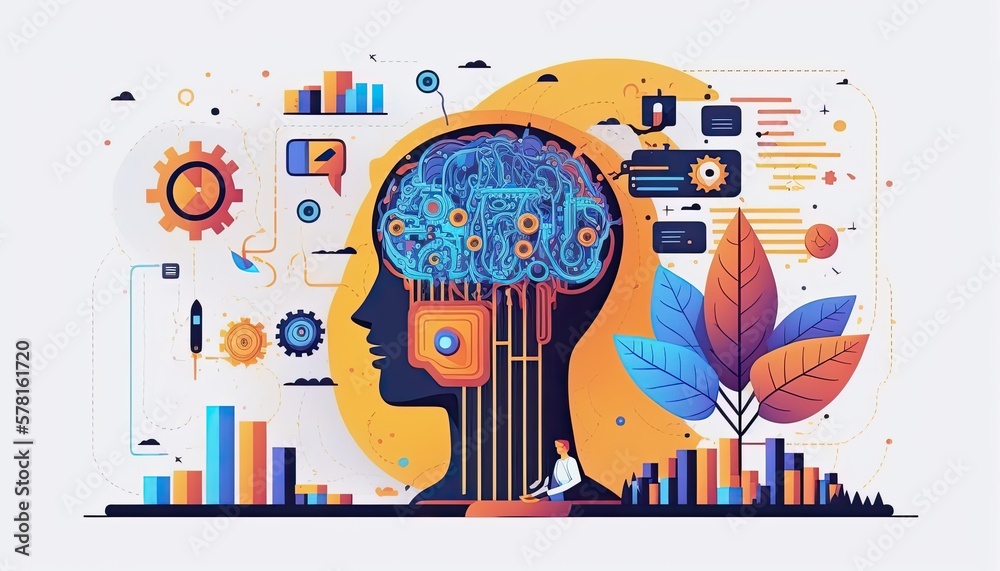Artificial intelligence (AI) has completely changed how we communicate, work, and live. Patterned AI learning, a method that lets machines learn from data and make predictions or judgments based on patterns they discover, is one of the most intriguing advancements in AI. This article delves into the realm of patterned AI learning, examining its principles, advantages, and uses.
What is Patterned AI Learning?
One kind of machine learning called “patterned AI learning” is teaching AI models to identify and absorb patterns in data. This method is predicated on the notion that patterns—such as correlations between variables, trends, or anomalies—are frequently visible in data. AI algorithms may produce insights, categorize data, and make predictions by spotting these patterns.
For More AI tools and Information Please Visit: Learnaifacts.com
A subset of supervised learning is called “patterned AI learning,” in which the AI model is trained using labeled data. The model gains the ability to identify patterns in the data and uses those patterns to forecast or classify the data. Pattern recognition is prioritized above prediction in patterned AI learning, which sets it apart from typical machine learning.
How Does Patterned AI Learning Work?
The process of patterned AI learning involves several steps:
- Data Collection: Gathering data relevant to the problem or question you want to solve.
- Data Preprocessing: Cleaning, transforming, and preparing the data for training.
- Model Selection: Choosing an appropriate AI model, such as a neural network or decision tree, to learn from the data.
- Training: Training the model on the labeled data, allowing it to learn patterns and relationships.
- Validation: Testing the model on a separate dataset to evaluate its performance and accuracy.
- Deployment: Deploying the trained model in a real-world application, such as a chatbot or recommendation system.
Benefits of Patterned AI Learning
Patterned AI learning offers several benefits, including:
- Improved Accuracy: By identifying patterns in data, AI models can make more accurate predictions and classifications.
- Increased Efficiency: Patterned AI learning can automate tasks, freeing up human resources for more strategic activities.
- Enhanced Insights: By recognizing patterns, AI models can provide deeper insights into data, revealing trends and relationships that may not be immediately apparent.
Applications of Patterned AI Learning
Patterned AI learning has numerous applications across various industries, including:
- Healthcare: Identifying patterns in medical data to diagnose diseases, predict patient outcomes, and develop personalized treatment plans.
- Finance: Analyzing financial data to detect fraud, predict stock prices, and optimize investment portfolios.
- Marketing: Using patterned AI learning to create targeted marketing campaigns, predict customer churn, and optimize customer experiences.
- Education: Developing personalized learning systems that adapt to individual students’ needs and abilities.
Real-World Examples of Patterned AI Learning
- Image Recognition: Google‘s image recognition system, which can identify objects, people, and scenes in images, is a classic example of patterned AI learning.
- Natural Language Processing: Chatbots and virtual assistants, such as Siri and Alexa, use patterned AI learning to understand and respond to voice commands.
- Recommendation Systems: Online retailers like Amazon and Netflix use patterned AI learning to recommend products and content based on user behavior and preferences.
Challenges and Limitations of Patterned AI Learning
While patterned AI learning offers many benefits, it’s not without its challenges and limitations:
- Data Quality: Poor-quality data can lead to inaccurate patterns and biased models.
- Model Complexity: Complex models can be difficult to interpret and may not generalize well to new data.
- Explainability: It can be challenging to understand why a patterned AI learning model is making a particular prediction or decision.
- Ethical Considerations: Patterned AI learning models can perpetuate biases and discrimination if not designed with ethical considerations in mind.
Conclusion
With the help of a potent technology called “patterned AI learning,” machines can now learn from data and make decisions or predictions based on patterns they find. By understanding the concepts, benefits, and applications of patterned AI learning, we can unlock its potential to drive innovation and improvement in various industries. It’s critical to address the difficulties and constraints as we continue to develop and improve patterned AI learning models in order to make sure that they are equitable, open, and advantageous to society at large.
Further Reading
- “Pattern Recognition and Machine Learning” by Christopher Bishop: A comprehensive textbook on pattern recognition and machine learning.
- “Deep Learning” by Ian Goodfellow, Yoshua Bengio, and Aaron Courville: A detailed introduction to deep learning, a key technique used in patterned AI learning.

